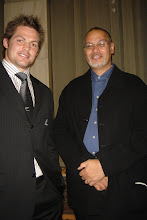Maori arrived here from Polynesia (from last year)about 1000 years ago. They arrived in ocean going waka and for some time there may have been 2 way voyages. This ended about 1400 as the supply of Moa ended and the Kumara arrived.
This created a change in culture from Hunter-Gatherers to Agricultural. Modern Maori culture developed around the occupation and control of land. Tribalism developed around familial groups of Whana, Hapu and Iwi.
Ideas of Tapu and Utu were used as social controls.
 We have also looked at the explorers and their impact on New Zealand. The most important idea attached to explorers is that they opened up New Zealand to the outside world. Maori discovered the rest of the world and its potential (within their own mindset) and Europe discovered a land that had political, military and economic potential (within their own mindset).
We have also looked at the explorers and their impact on New Zealand. The most important idea attached to explorers is that they opened up New Zealand to the outside world. Maori discovered the rest of the world and its potential (within their own mindset) and Europe discovered a land that had political, military and economic potential (within their own mindset). Initial European interest in the Pacific was sparked by Spain's desire to find a route to the Indes in particular the Spice Islands (Today part of Indonesia). They simply sailed across the Ocean with little idea of its size. Some were lucky and with ideal winds crossed quickly, others sailed into the doldrums (Horse latitudes) and perished. It was later exploration by the Dutch, English and French which would open the South Pacific and in particular New Zealand to later adventurers.
The terms "Terra Australis" or "Terra Incognita" feature in this initial period of discovery. Europeans were convinced that there must be a land mass of similar size to Europe, Russia, China and North America . It was necessary to balance the globe otherwise it would simply tip over!
It was believed that such a land would like others create vast wealth from its natural resources. Everyone who followed the Conquistadors wanted the same luck. Of course the native people would be unaware of their mineral wealth and would gladly hand over control of these resources because of the benefits that contact with the Europeans would bring. (Western civilisation including possible enslavement, disease, loss of land, language and culture....)
A second factor was religion. The indigenous people would lack any understanding of Gods word, and would need to be converted. It was their duty to seek out and convert these heathens. It was also necessary to ensure they were converted to the "true" faith dependent upon the variety of the Christian faith which was followed. Thus Catholic and Protestant competed for the souls of the natives.
Another reason was simple curiosity. The late 18th and early 19th centuries were ones of great investigation and discovery. Europeans in paticular the French and British were searching further and further afield as they sought to open up the world. Science was breaking free of the shackles imposed by religion and superstition.Tasman arrived off the coast of New Zealand in 1642 looking for Australia. He'd managed to sail from Batavia in the Dutch East Indes along the coast of Western Australia then across the Great Australian Bight and across the sea that would later bear his name. Tasman missed Victoria and New South Wales completely! He more or less crashed into New Zealand by accident.
Having sighted the West Coast and being attacked at Murderers (Later renamed 'Golden Bay' for obvious reasons) Bay he left sighting "Giants" (through an imperfect lens perhaps?) on the Three Kings. He returned to Batavia by sailing north, Australia continued to elude him. His report when it arrived in Holland would prove that the super-continent Terra Australis did not exist. This meant that the little bit of land on his map was not Australia and needed a new name. The Mapmaker chose New Zeeland.
Maps based on those left by Tasman would be used in 1769 by James Cook who as we know travelled to Tahiti to view the transit of Venus. His secret orders sent him south to confirm that there was no super-continent (trust the British not to accept the word of Europeans!). Thus he discovered and mapped New Zealand and then crossed the Tasman Sea to at last find the east coast of Australia, that the wayward Dutchman had missed. Cook had the benefit of the H4, Harrisons new chronometer which allowed him to make some of the most accurate maps ever made. The new charts and reports of the resources in both places would lay the foundations for later exploration. He reported New Zealand was populated by a fairly civilsed, industrious, people and contained large quantities of flax and timber suitable for the needs of a navy. Australia especially the area near Botany Bay was well suited to settlement despite the "wretched" people that lived there.
The explorers had laid the groundwork for later exploitation and eventual settlement. Flax and Timber would be useful should Britain and France go to war in the Pacific - why not they'd managed to fight each other pretty much every where else!




No comments:
Post a Comment